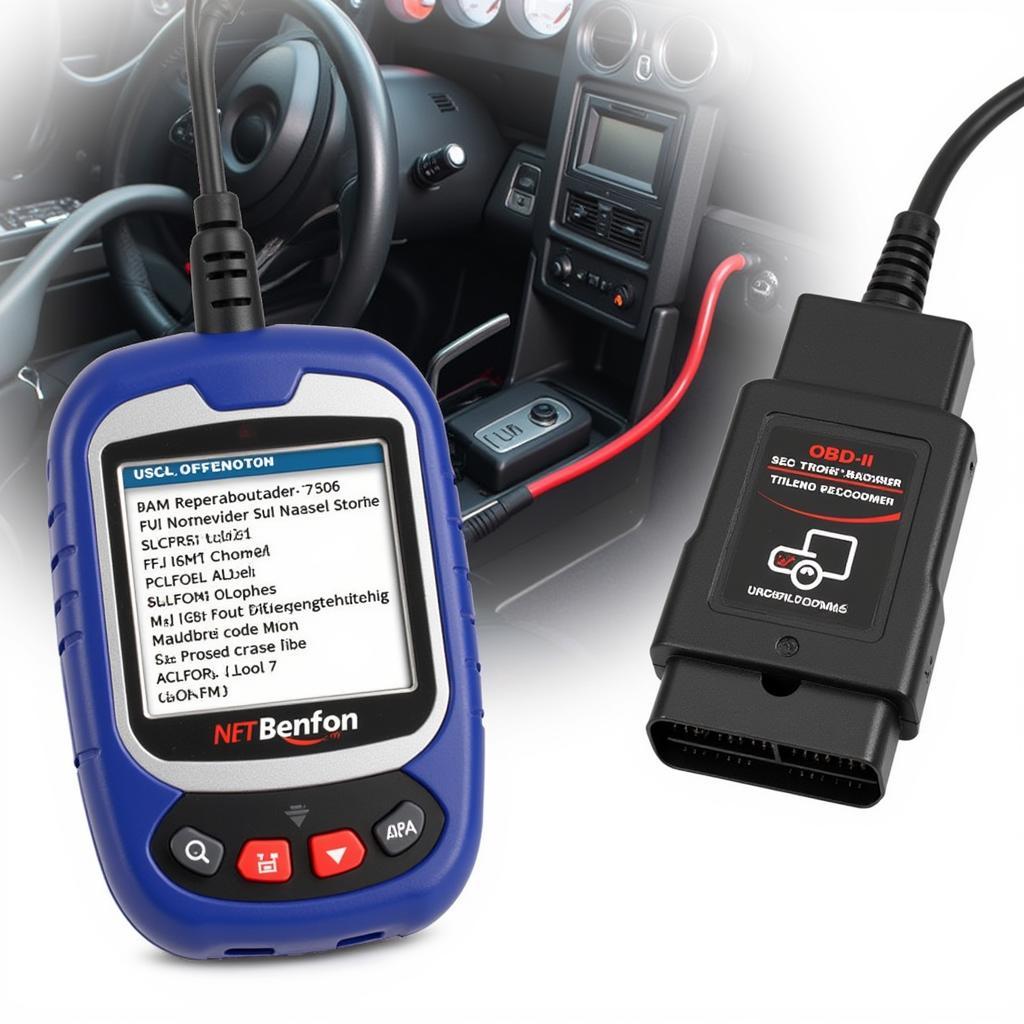Seeing the brake system warning light illuminated on your ’04 Suburban’s dashboard can be concerning. This light, often a red circle with an exclamation point or the word “BRAKE,” signals a potential issue with your SUV’s braking system. While it doesn’t always mean a complete brake failure is imminent, it’s crucial to address the issue promptly to ensure your safety and prevent further damage. This guide dives deep into the common causes of a brake system warning light in your ’04 Suburban and provides actionable steps to troubleshoot the problem.
Understanding Your Suburban’s Brake Warning System
Before delving into the specifics, it’s crucial to understand how your Suburban’s brake warning system operates. The system comprises various components working in sync to alert you of potential issues:
- Brake Fluid Level Sensor: This sensor constantly monitors the brake fluid level in the master cylinder. A low fluid level, often caused by a leak, can trigger the warning light.
- Parking Brake Switch: Engaging the parking brake activates this switch. If the light remains on even after releasing the parking brake, it could indicate a faulty switch or a problem with the parking brake mechanism.
- ABS System: Your Suburban likely features an Anti-lock Braking System (ABS). A malfunctioning ABS module or sensor can trigger the brake warning light alongside the ABS warning light.
Common Causes of a Brake System Warning Light in a ’04 Suburban
Several factors can illuminate the brake system warning light in your ’04 Suburban. Identifying the root cause is essential for effective troubleshooting:
1. Low Brake Fluid Level
A leading cause of the warning light is low brake fluid. Brake fluid is the lifeblood of your braking system, transmitting force from the master cylinder to the brake calipers, engaging the brakes. A leak anywhere in the system can cause a drop in fluid level.
Troubleshooting Tips:
- Check the brake fluid level. Park your Suburban on a level surface and locate the brake fluid reservoir. The reservoir is typically located near the firewall on the driver’s side.
- Inspect the reservoir for leaks. Look for any signs of wetness or fluid around the reservoir cap or base.
- Top off the brake fluid. If the level is low, carefully add the correct type of brake fluid recommended for your Suburban.
- Inspect for leaks. If the fluid level is consistently low, it indicates a leak. Thoroughly examine the brake lines, hoses, and calipers for any signs of leaks.
2. Worn Brake Pads
Brake pads are designed to wear down over time. As they wear thin, the brake calipers need to extend further to engage the rotors, leading to a drop in brake fluid level and triggering the warning light.
Troubleshooting Tips:
- Inspect the brake pads. Check the thickness of the brake pads through the spaces between the wheel spokes.
- Look for wear indicators. Most brake pads have wear indicators – small metal tabs that create a squealing sound when the pads are worn.
- Replace worn brake pads. If the pads are worn below the recommended thickness or you hear squealing, it’s time for a replacement.
 Worn Brake Pads
Worn Brake Pads
3. Faulty Brake Light Switch
The brake light switch, located near the brake pedal, activates the brake lights when you press the pedal. A malfunctioning switch can disrupt the brake light circuit, potentially triggering the brake warning light.
Troubleshooting Tips:
- Check the brake lights. Have someone press the brake pedal while you inspect the brake lights. If the lights don’t illuminate, the switch could be faulty.
- Test the brake light switch. Consult your Suburban’s repair manual for specific instructions on testing the switch using a multimeter.
- Replace a faulty switch. If the switch is defective, replace it with a new one.
4. ABS System Malfunction
A malfunction within the ABS system, such as a faulty wheel speed sensor or a problem with the ABS module, can trigger both the brake warning light and the ABS warning light.
Troubleshooting Tips:
- Check for the ABS warning light. If both the brake warning light and the ABS light are illuminated, the issue likely lies within the ABS system.
- Retrieve ABS fault codes. Use an OBD-II scanner to read the fault codes stored in the ABS module. These codes provide specific information about the problem area.
- Diagnose and repair the ABS issue. Depending on the fault code, you may need to replace a faulty sensor, repair wiring issues, or address problems with the ABS module.
 OBD-II Scanner
OBD-II Scanner
Seeking Professional Help: When Remote Diagnostics Can Assist
While the troubleshooting tips above can help address common issues, some situations require the expertise of a qualified mechanic. Remote diagnostics, a service offered by many automotive specialists, can be incredibly helpful in these instances:
“Remote diagnostics allow us to connect to your vehicle’s onboard computer system remotely,” explains John Miller, a certified automotive technician with over 20 years of experience. “This allows us to read fault codes, analyze live data streams from various sensors, and pinpoint the root cause of the problem.”
This service can be particularly beneficial for diagnosing complex issues within the ABS system or when a visual inspection doesn’t reveal the problem’s source.
Conclusion
Addressing a brake system warning light in your ’04 Suburban requires prompt attention to ensure your safety on the road. While some causes, like low brake fluid, can be addressed with basic troubleshooting, others require professional expertise. Remember, your Suburban’s braking system is critical for your safety and the safety of others. When in doubt, always err on the side of caution and seek professional assistance.

